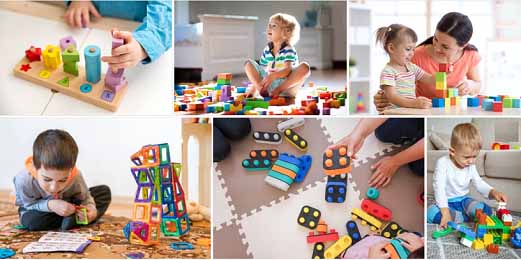Research shows that playing with toys and other children makes kids happier, healthier, and even more social. In fact, toys are so effective at improving our mental and physical development that we use them as toys when we talk about them. When parents buy toys for their kids, they’re usually concerned about the long-term effects on their children’s development. In this article, you’ll learn about how toys affect your child physically and mentally from prenatal through age 6 years. You’ll also discover how different types of toys help your child develop in specific areas
How Does Playing With Toys Affect Children?
Physical and mental developments are influenced by how a child plays with toys. By learning to use a toy correctly and applying it to a different purpose each time, kids develop skills that last a lifetime. Here are just a few of the many ways playing with toys promotes physical and mental growth: Prenatal - Baby’s first steps - Building blocks - Cockerspaniel - Dorges and Gambrinus - Geared up for creative play - Matching toys - Motor skills - Wooden toys - Feeling creative - Making friends - Sharing toys - Nurturing behavior - Equipping your child for future success - Improving eye-hand coordination - Learning new skills - High-quality play - Nurturing behaviors - Creating a safe, secure, and happy playing environment - Clean mommy play - Safety first - Social skills - Emotional & cognitive development - Practicing mindfulness - Practicing forgiveness - Practicing love - Practicing self-worth - Practicing joy - Practicing peace - Practicing contentment - A lasting impact - Preventative maintenance - Wrapping it all up
How Does Playing With Toys Effect Physical Development?
Children who play with toys lead physically active, healthy lifestyles. Research shows that kids who play with a toy hammer much more often have better muscle and brain function than kids who don’t. This is because playing with toys allows you child to: Use their muscles - The act of using muscles is called “contraction.” During contraction, your child curls their muscles and lengthens their spine. This promotes flexibility and helps your child get a better “push” when they’re playing. Use their joints - A joint is a place where two or more body parts come together. When joints get a workout, they grow stronger. This encourages your child to use their joints more often as they grow. Use their brain - Children who play with toys are generally smart. They learn how to use basic skills such as climbing, balancing, and walking before they’re able to talk. This makes your child smarter as they grow older.
How Does Playing With Toys Effect Mental Development?
Playing with toys also helps children develop the neural pathways that control emotion. By playing with toys, kids learn about different emotions. This learning helps them understand themselves better and interact better with others. For example, if your child is clumsy, they might experiment with different types of toys to figure out which one feels the best. By playing with different toys and figuring out what works for them, you empower your child to know what feels best to them! This can be really helpful in understanding your child’s likes and dislikes and in finding the right toys for them. Here are a few of the many ways toys affect your child’s mental development:
⦁ Social - As your child grows, they’re going to start playing with other kids. This is a crucial developmental period because your child is learning how to interact with others and make judgements based on how they feel. By playing with toys that other kids like, your child learns how to:
Compete - Investing in games that your child will enjoy is the first step to teaching them how to play well.
Sell - Market research shows that kids between the ages of 6 and 8 are the most interested in selling.
What to Look For When Buying Your Child a Toy
Toys are different types of things that kids use. The two most common types of toys are structured and free-form. Free-form toys can be used for almost any purpose. Most toys are categorized by type. For example, toys with craft instructions are categorized as craft toys, whereas toys that fly and cars that drive are categorized as vehicles.
In this article, we’ve analyzed how toys help kids develop and we've listed the many benefits of toys for kids. From physical development to cognitive skills, toys can help children reach their full potential. From a young age, kids acquire the skills to help them grow and develop into the adults they’re going to be.























Comments (0)